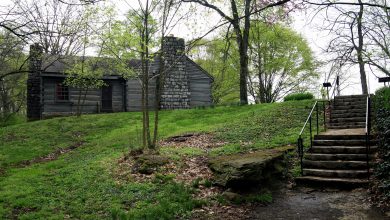The Weight of History: Key Battlefields to See in TN
The Most Awe-Inspiring Civil War Sites in Tennessee
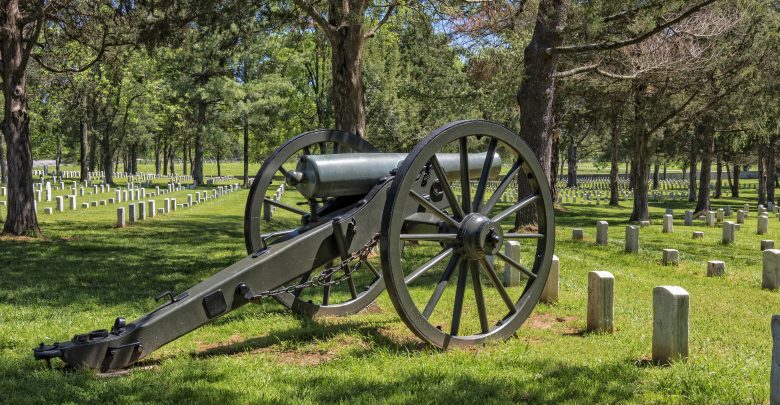
Throughout Tennessee, as with any southern state, traces remain of the Civil War. Sometimes they’re as obvious as a sprawling cemetery commemorating fallen soldiers, or remnants of military forts high on a mountain. Other times, this important history is hidden within still-standing homes that once became the scene of bloody battlefields and hospitals. Here are some of the most awe-inspiring battlefields in the state of Tennessee, waiting to divulge their secrets and let you in on the haunting echoes of the Civil War.
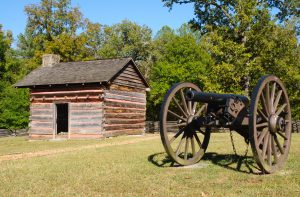
Chickamauga & Chattanooga National Military Park – Chattanooga
Chattanooga was considered the “gateway” to the “Deep South”, and it was here that Union and Confederate soldiers battled for control of this important strategic area. Chickamauga & Chattanooga National Military Park tells the story of this Battle Above the Clouds, high on Lookout Mountain. Wander the walking trails along the steep hills where the battle took place, and enjoy the dramatic views of Chattanooga from Point Park. The park encompasses many different spaces that served as battlefields during the Civil War, including Missionary Ridge, Chickamauga Battlefield, Orchard Knob, and Lookout Mountain. There are almost 10,000 acres to discover, including 1400 monuments and a visitor center with exhibits. Nearly 13,000 soldiers are buried in the Chattanooga National Cemetary that faces Missionary Ridge.
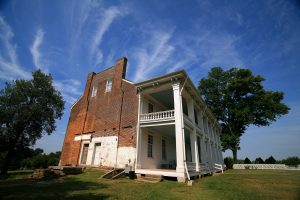
Ifistand / Bigstock
Carnton Plantation – Franklin
Carnton Plantation is both a beautiful private residence and the site of the Battle of Franklin. In 1864, in what is commonly considered to be the bloodiest few hours of the Civil War, the Confederate Army attacked the Federal Army in a huge frontal assault. During the span of only 5 hours, the Battle of Franklin raged, resulting in nearly 10,000 soldiers being wounded or killed, captured, or declared missing. Carnton was converted into a makeshift hospital, and during the battle and the night that followed, hundreds of wounded men were brought here, until the numbers exceeded the capacity of the house and they spilled out into the yard. In fact, the floors of Carnton still bear the blood stains of the men who lay here wounded or dying so many years ago. Today, you’ll find the McGavock Confederate Cemetery here, a monument to those who died during the Battle of Franklin, and you can tour the house itself.
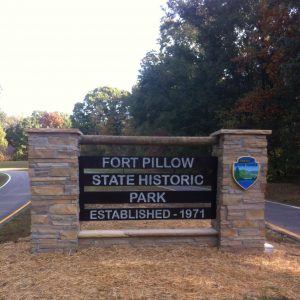
Fort Pillow State Historic Site – Henning
One of the most tragic incidents in the history of America’s military occurred at Fort Pillow, in Henning. In April of 1864, the Battle of Fort Pillow was fought here, and culminated in a bloody massacre of hundreds of troops, mostly African-American, as they tried to surrender. You can learn more about this sad event by exploring the fort, built in 1861 on the cliffs overlooking the Mississippi River. Set on more than 1600 acres, Fort Pillow today consists of preserved earthworks as well as a reconstruction of the inner fort. There are interpretive displays and artifacts from the Civil War to help bring to life this chapter of American history, and you can also watch a short video about the battle.
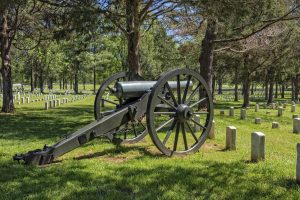
Jim Vallee / Bigstock
Stones River National Battlefield – Murfreesboro
Along the Stones River northwest of Murfreesboro lies the Stones River National Battlefield, commemorating the Battle of Stone River on December 31st, 1862 and January 2, 1863. The battle is considered one of the pivotal battles in the Civil War, resulting in a Union victory. Located on 570 acres, the park consists of an extensive system of trails (seven miles, in fact) that come complete with helpful signs to let you know what you’re looking at, and what happened right where you’re standing. There are over 6,000 Union soldiers buried in the Stones River National Cemetery, within the park boundaries. Once you’ve seen the battlefield, or before, make sure you pay a visit to the visitor center, which includes a bookstore, interactive exhibits, and a film.
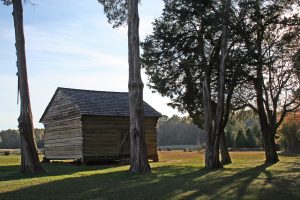
Kevin Mahaffy / Bigstock
Shiloh National Military Park in Shiloh, Tennessee
If you’re looking for a site that’s steeped in history and contains many impressive monuments and battlefields in one location, look no further than Shiloh National Military Park, where 150 years ago, 23,746 lives were lost – the highest number of casualties in any American war up to that point. Start at the visitor center, which contains exhibits about the battles and weapons used during the war, as well as historic guides. You’ll want to visit the Shiloh Battlefield, as well as the Corinth site, which will give you a fascinating glimpse into the Seige and Battle of Corinth. Preserved battlefields, statues and monuments can be explored. It’s also worth visiting the United States National Cemetery within the site, where thousands of soldiers and their families are buried (the tall stones represent identified soldiers, while short stones mark the graves of unknown soldiers). While you’re here, don’t miss the Shiloh Indian Mounds, also part of the park, which are themselves a National Historic Landmark.
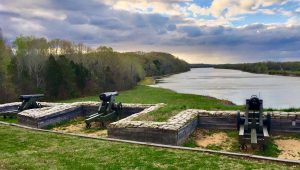
Fort Donelson National Battlefield
When Fort Donelson was surrendered in February of 1862, it became the first major Union victory in the Civil War. Grant and his soldiers were now free to invade the Confederate heartland, and they proceeded to captured three forts and open the Tennessee River and the Cumberland River to Union control. Two distinct sites are preserved in Fort Donelson National Battlefield. The main park area is in Dover, Tennesee, and consists of Fort Donelson, while the other part of the park consists of Fort Heiman in Kentucky. If you visit today, you’ll find much of the original battlefield preserved. You can view the remains of Fort Donelson and the batteries at the river, but you’ll have a harder time trying to view the area where the Confederate Army attacked, as this area is now mostly a residential area. Union soldiers and sailors are buried in Fort Donelson Cemetery.



